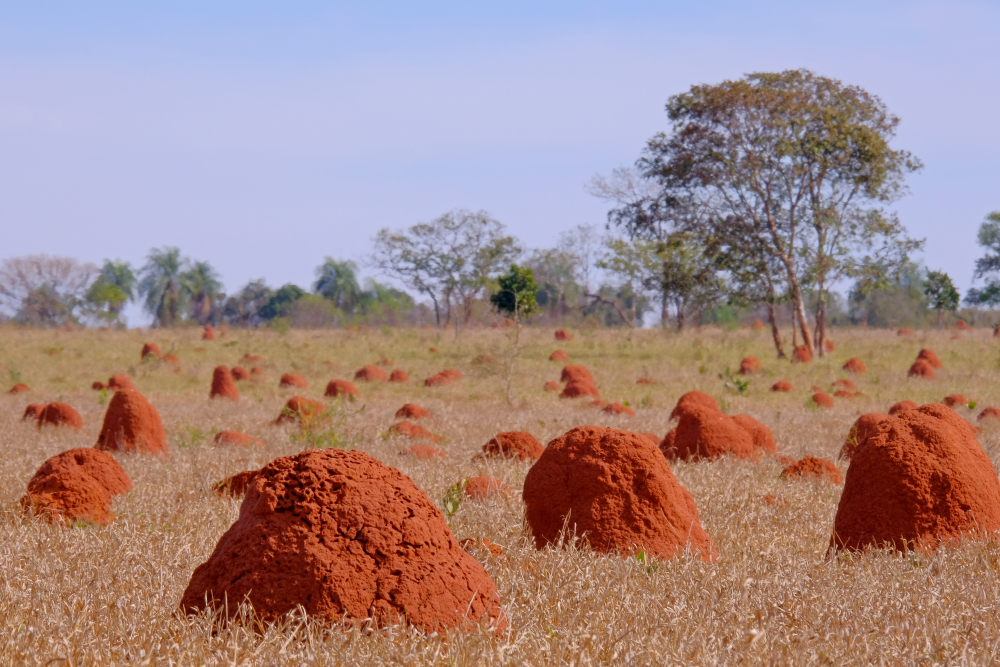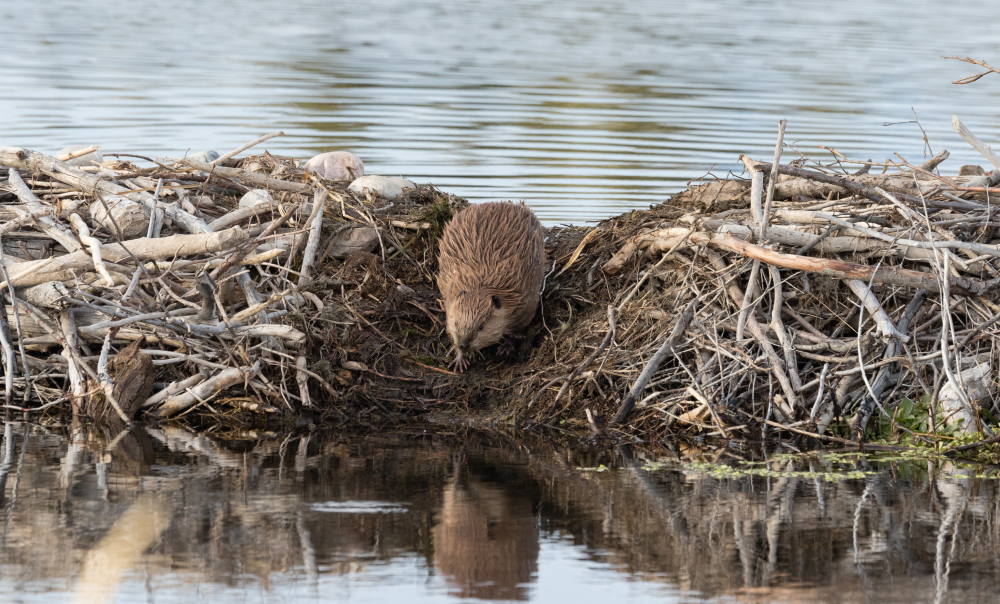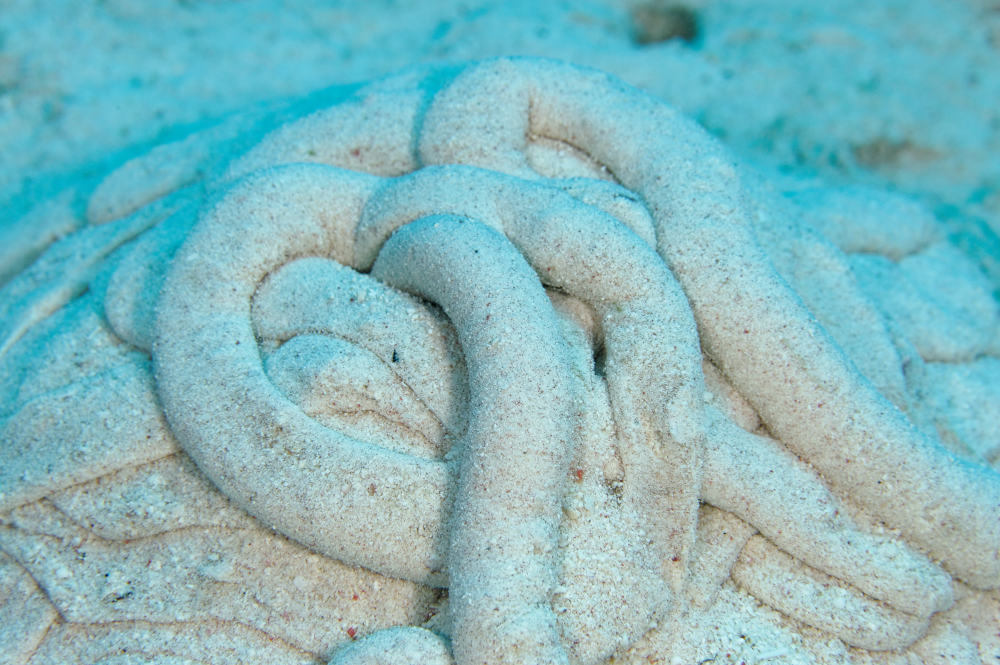A first-of-its-kind global assessment has revealed 603 wild animals plus five livestock taxa that do more than just inhabit the Earth – they shape it. These “animal architects” literally move their own versions of mountains, as tiny ants and termites build towering mounds, and beavers influence the paths of our waterways.
ADVERTISEMENT GO AD FREE
The study comes in the same week as a second piece of research that specifically focused on the influence of animal architects deep underwater. By taking scans of cores taken from the deepest part of the ocean, they saw how burrowing animals like sea cucumbers and other invertebrates shift the sediment via a network of tunnels.

Termites move near-literal mountains with their incredible creations.
Image credit: reisegraf.ch / Shutterstock.com
Animal architects
Even small animals are capable of incredible feats of engineering. From a pufferfish that creates one of the most remarkable courtship displays on Earth by carving a functional nest into the sand that’s 16 times its own size, to livestock that trample and compact the soil, degrading vegetation and contributing to emissions.
The seismic changes to our planet’s surface caused by these “natural engineers” are called geomorphic contributions, and this new research has revealed that they rival the impact of hundreds of thousands of floods in their energetic output. There was remarkable diversity observed within the species acting as animal architects, covering insects, fish, reptiles, birds, and mammals (could the Mima Mounds be another example?).
Animals’ geomorphic contributions were found to represent around 76,000 gigajoules of energy annually, but their colossal efforts could be at risk. Nearly a third of the animal architect species identified are rare, endemic, or threatened, meaning their geomorphic contributions could also be at risk.

Beavers fell trees as they build their dams, completely reshaping the landscape.
Image credit: Ronnie Howard / Shutterstock.com
“This research shows that the role of animals in shaping Earth’s landscapes is much more significant that previously recognised,” said Professor Gemma Harvey in a statement. “From beavers creating wetlands to ants building mounds of soil, these diverse natural processes are crucial, yet we risk losing them as biodiversity declines.”
Not only do the findings underpin why it’s so important to preserve biodiversity, but they also give us options when trying to reshape the landscape. Rewilding could harness the power of hardworking animals like beavers to return degraded habitats to what they once were, and it’s not the first time the value of ecosystem services has been recognized.
Deep-sea engineers
The towering termite mounds in Brazil can be seen from space, but down in the deepest part of the ocean, there are more subtle signs of engineering. Here, scientists collected cores and used micro-CT scans to see what was happening in the seabed. They discovered the trace remains of animals that burrow and feed in the seabed, shaping the ocean floor.

That right there is a big heap of sea cucumber poop.
Image credit: Kimmo Hagman / Shutterstock.com
“Walking colon” sea cucumbers are famous for their capacity to poop out five Eiffel Tower’s worth of matter per coral reef annually, a kind of ecosystem engineering known as bioturbation. For the animals, it’s a way of accessing resources hidden in the sediment, but it has the beneficial knock-on effect of mixing the sediment and reshaping the sea floor.
The impact of bioturbation is much the same at 7.5 kilometers (4.6 miles) below the ocean surface, where the team discovered there’s a diverse range of burrowing life. That includes sea cucumbers, polychaete worms, bivalves, isopods, and gastropods.
This cast of characters has been snuffling up particles of organic matter in the sediment and moving it around as they burrow, creating spiraling networks of tunnels as they disturb the sediment. This kicks off a three-phase process as opportunistic feeders, deeper burrowers, and microbe-farming species rush in to see what’s on offer.
ADVERTISEMENT GO AD FREE
Evidence of their activity was seen in analyses of sediment cores from the Pacific Ocean’s Japan Trench, a region that sits in the murky depths of the Hadal Zone. This ecosystem is a relatively unknown part of the ocean, so understanding how burrowing animals contribute to nutrient cycling is a pivotal piece of the ongoing puzzle.
What was once thought to be a pretty barren part of the marine environment is actually rustling with life, creating a self-sustaining system that’s constantly recycling organic matter and supporting the microbial species that form the foundation of the food web. The findings have big implications for the conservation of these out-of-sight species, especially at a time when deep-sea mining has thrown its hat in the ring as a potentially less disruptive means of accessing battery metals, but one that may threaten numerous species.
The studies are published in PNAS and Nature Communications respectively.
Source Link: More Than 600 "Animal Architect" Species Are Shaping The Face Of The Earth